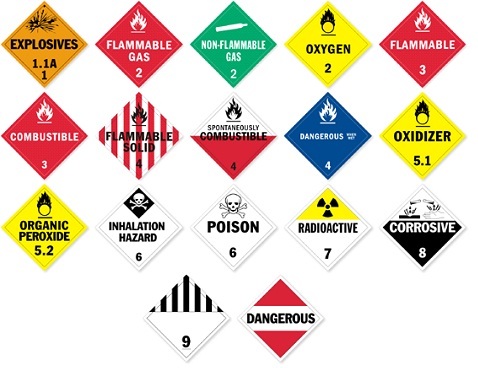There are more than 1.5 billion tons of hazardous materials (hazmat) transported each year in the United States either by truck, train, boat or aircraft, according to U.S. Department of Transportation and Commerce.
Many federal agencies such as the Department of Transportation (DOT), Occupational Safety and Health Administration (OSHA) and Environmental Protection Agency (EPA) have regulations regarding the transportation and disposal of hazardous materials.
For those involved in transporting hazardous materials, this raises special risks and is why there is a special insurance policy for the transportation of hazardous materials. Depending on what cargo one hauls, these various federal agencies have different regulations regarding the transportation of hazardous materials.
Transportation of hazardous materials causes unique highway safety concerns. One of these concerns is the release of cargo that may contaminate or injure those coming in contact with the hazardous substance. These crashes may also cause fires, explosions and the release of toxic fumes. Imagine the cost of clean-up and other damages that could occur if a tanker full of hazardous materials were to explode on a busy highway. Now, try to imagine covering these costs without being covered by insurance.
What Are Hazardous Materials?

Enjoying our insights?
Subscribe to our newsletter to keep up with the latest industry trends and developments.
Stay InformedHere are some types of materials that are considered hazardous when transporting:
- Petroleum Products
- Propane
- Dynamite
- Cleaning Compounds
- Adhesives
- Paint
- Poisonous Chemicals
- Combustible Gases
- Fertilizers
- Chemicals
- Contaminated Soil or Products
Statistics and Facts Involving Trucks Carrying Hazardous Materials
If you are a company or a driver involved in the transportation of hazardous materials, there are some important facts and statistics you should pay attention to as reported by the Federal Motor Carrier Safety Administration’s Office of Information Management. These statistics further emphasize the importance of carrying property hazardous materials transportation insurance.
- For the years of 1980 to 1990, the average number of large trucks carrying hazardous materials involved in fatal crashes was 225 annually.
- Non-fatal crashes involving large trucks carrying hazardous materials for the same time period was about 6,000 annually.
- Transportation of flammable liquids accounts for almost half of all fatal truck crashes involving hazardous materials for the years of 1991 to 2000.
Insurance Requirements
Hazardous materials haulers face specific insurance requirements and must provide insurance liability usually between $1 million and $5 million depending on the cargo.
If cargo haulers are unsure of the classification of cargo, they should contact the shipper who provided the cargo or look at the definitions of hazardous materials in hazardous materials regulations under 49 CFT 177. Failure to comply with insurance requirements for hauling hazardous materials can result in civil penalties and fines as well as possible incarceration.
A carrier’s transportation of hazardous materials insurance policy covers liability for loading and unloading cargo. Also in-transit coverage, site pollution clean-up operations, and on-going contamination.
Where to Buy HAZMAT Insurance
If you are a hauler of hazardous materials, you may wonder where you can find insurance coverage. If your insurance agent handles commercial coverage, he or she will likely have a commercial market that offers hazmat insurance. There are insurance brokers and carriers who offer a transportation of hazardous materials insurance policy, including:
- ACE Insurance Hazmat Transportation Coverage
- Colonial Hazmat Truck Insurance
- Freberg Environmental Insurance
How to Get More Information about Transporting Hazardous Materials
Carriers can get additional information about the safe transport of hazardous materials by reviewing regulations found at the U.S. Department of Transportation’s Pipeline and Hazardous Materials Safety Administration (PHMSA). as well as other resources including data and statistics, information on incident reporting, national pipeline mapping system (NPMS), planning and analytics, forms, and other information resources.
Other helpful resources include the Federal Motor Carrier Safety Administration, which provides training materials for dealing with hazardous materials in a bi-lingual package as well information booklets dealing with federal hazardous materials regulations.
Top safety, registration and licensing resources for drivers provided include driver safety education, physical exam forms, drug and alcohol testing information and rollover prevention. Also, information about registering for a commercial driver’s license, requirements for driver medical fitness for duty, driver medical exemption notices, and information about distracted driving and cell phone bans.






















